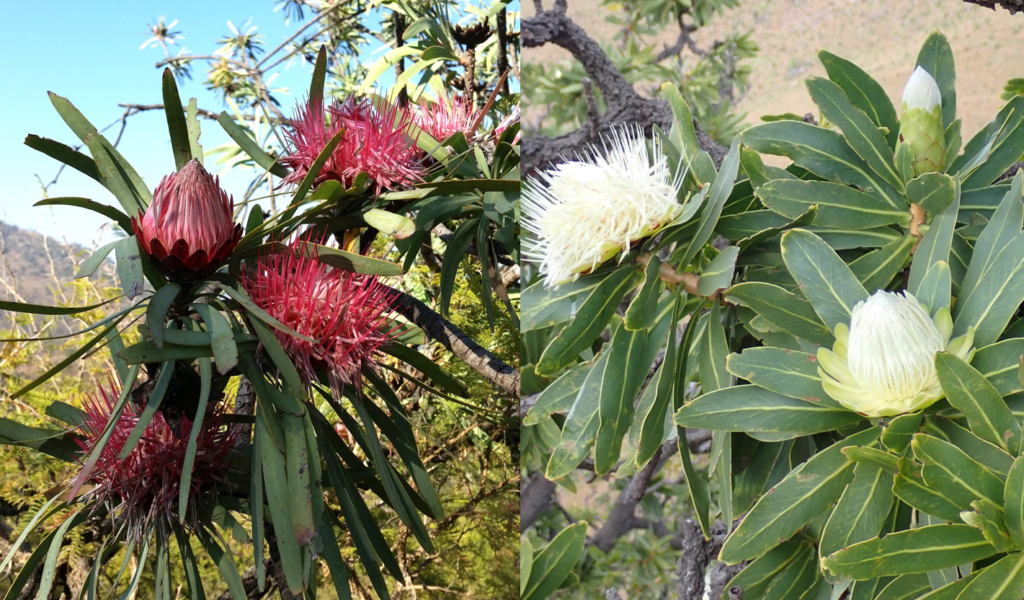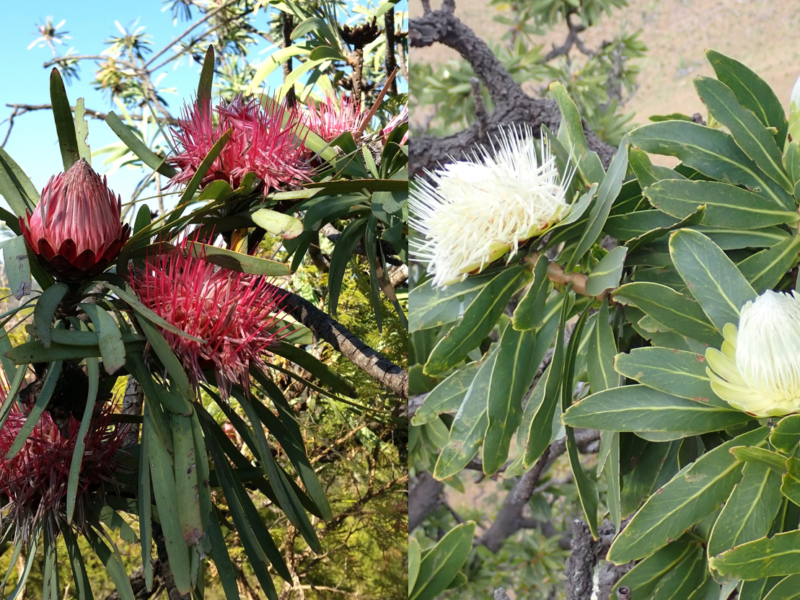
From left: Protea curvata and Protea comptonii
“The Earth laughs in flowers” is a famous quote of the American essayist, Ralph Waldo Emerson. And in winter, when many of our plants look decrepit, some of our Protea species are smiling.
It is that time of the year when two very special Protea species are in bloom in the Barberton area. One occurs only in the De Kaap valley and the other makes a hop, skip and jump from Barberton to the Vryheid area in Kwazulu-Natal. Patriotic by name, both plants were commonly known as the Barberton sugarbush.
Protea comptonii (Barberton Protea) is flowering prolifically this year. It is a medium sized tree that grows on rocky outcrops in the grasslands. It has showy, white flowerheads. Its dark green leaves have a distinct pink to yellow midrib. This species is known from the mountains east and south east of Barberton in Mountainlands and Songimvelo Nature Reserves; north-western eSwatini and Ithala Game Reserve in northern Kwazulu-Natal. It is estimated that the entire world population consists of between 3150 to 6300 individual plants in the wild.
Blooming with distinctive pink flowers and carrying grey-green leaves, Protea curvata (Serpentine Protea) is also a medium sized tree. It grows on extraordinary soil – talcose serpentinite in the Jamestown Schist Belt; a geological formation located north and north east of Barberton. These soils are considered a harsh environment for plants due to heavy metal toxicity, its poor capacity to hold water and poor nutrient content, among others. It is estimated that only a few thousand of these trees are left in the wild and that their numbers are declining in some populations.
Both these species are classified as Vulnerable and protected by law. This means no plant may be disturbed, damaged or its flowers picked. So admire and appreciate them and photograph while their flowers visit for a short while.

